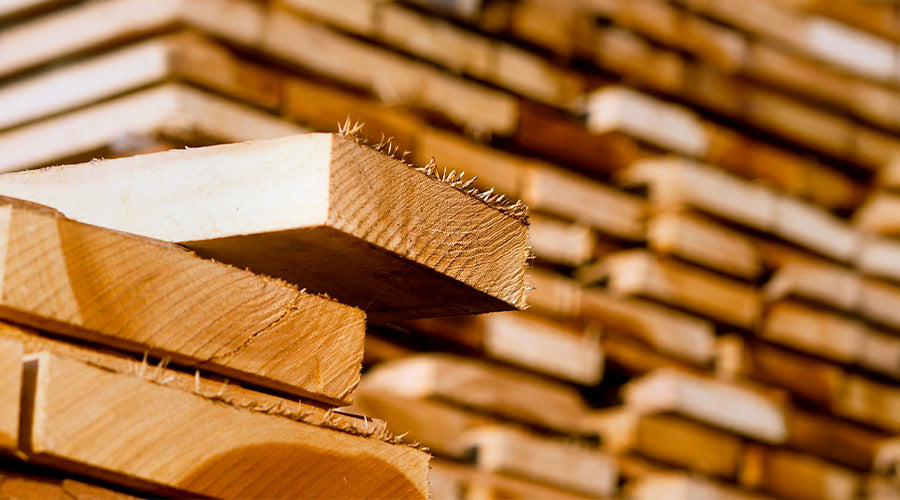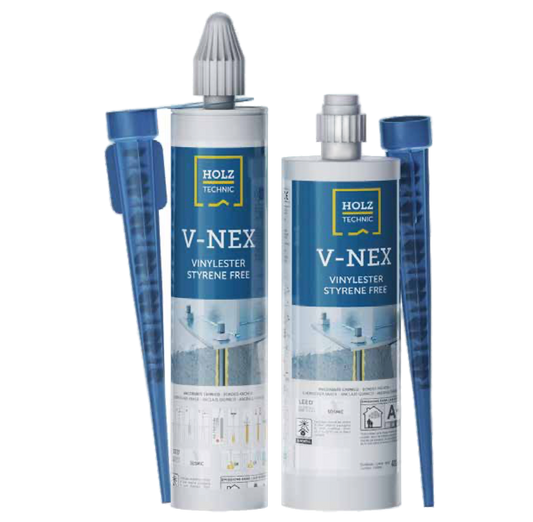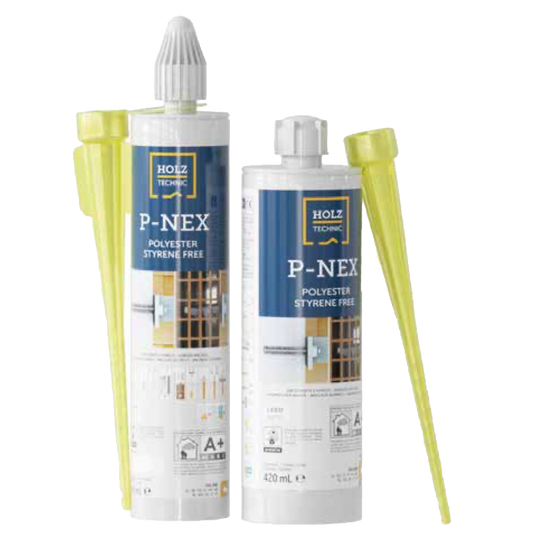
Chemical Anchors
High-strength chemical anchors for secure fixings
A chemical anchor is a high-performance anchoring solution used in construction, engineering, and heavy-duty fixing applications. Unlike traditional mechanical anchors, chemical resin anchors create a secure, permanent bond between the fastener and the base material, ensuring maximum load-bearing capacity and resistance to environmental stress.
Whether you're working with concrete, brick, stone, or masonry, using the right anchoring chemical ensures a durable and long-lasting fix for structural and load-bearing installations.
Our chemical anchors provide a powerful, long-lasting bond for heavy-duty applications. Ideal for concrete, brick, and masonry, they ensure superior load-bearing strength and durability. Browse our chemical anchor solutions today.
-
V-NEX Vinyl Ester Resin Chemical Anchor without Styrene (box of 12)
Regular price From £126.11 GBPRegular priceUnit price / per -
P-NEX Polyester Resin Chemical Anchor without Styrene (box of 12)
Regular price From £104.48 GBPRegular priceUnit price / per
What are chemical anchors?
A chemical anchor is a resin-based fastening system that creates a strong bond between a threaded rod or rebar and the base material. Instead of relying on expansion or mechanical grip, these anchors use chemical adhesion to provide high-strength, corrosion-resistant fixings.
Types of chemical anchors:
- Chemical Anchor Resin – A two-part resin-based adhesive that bonds fasteners into pre-drilled holes.
- Chemical Resin Anchors – Used with threaded rods, rebar, and studs for superior load-bearing performance.
- Anchoring Chemical Adhesives – Specialised adhesives designed for structural bonding in concrete, brick, and stone.
Commonly used in civil engineering, bridge construction, industrial installations, and high-load fixings, chemical anchors provide unmatched strength and durability.
How do chemical anchors work?
Chemical anchors bond the fixing element directly to the base material, ensuring a strong and secure hold without exerting expansion forces.
Step-by-step process of how chemical anchors work:
- Drilling the hole – A hole is drilled into the concrete, masonry, or brick to match the anchor size.
- Cleaning the hole – Dust and debris are removed using a brush or compressed air to ensure a clean bond.
- Injecting the chemical resin – A two-part chemical anchor resin is injected into the hole, filling voids and creating a solid foundation.
- Inserting the fastener – A threaded rod, rebar, or stud is inserted into the resin-filled hole.
- Curing and hardening – The resin hardens to create a strong, load-bearing connection, permanently bonding the anchor to the material.
Unlike mechanical anchors, which rely on expansion or friction, chemical resin anchors provide a stress-free installation, reducing the risk of cracking or damage in weaker or hollow materials.
What are the benefits of chemical anchors?
1. Higher load capacity - Chemical adhesive anchors provide superior strength and load distribution, making them ideal for heavy-duty applications.
2. No expansion stress on base material - Unlike mechanical expansion anchors, chemical anchors do not exert force on the surrounding material, reducing the risk of cracking in brick, masonry, and concrete.
3. Versatile application - Chemical resin anchors are suitable for a wide range of materials, including concrete, brick, stone, and hollow masonry.
4. Corrosion resistance - Once cured, chemical anchors provide a weatherproof, corrosion-resistant bond, making them perfect for outdoor and marine environments.
5. Long-lasting durability - Because they chemically bond with the substrate, chemical anchors offer permanent, high-strength fixings that outperform traditional mechanical fasteners.
How to install chemical anchors?
Step-by-step guide to installing chemical anchors:
1. Select the right chemical resin anchor
- Choose a chemical anchor resin suitable for the material and load requirements.
- For outdoor applications, use a corrosion-resistant anchoring chemical.
2. Drill the hole
- Use a rotary hammer drill with the correct drill bit size for the anchor.
- The hole should be deep enough to fully embed the threaded rod or rebar.
3. Clean the hole
- Remove all dust and debris using a brush or compressed air.
- A clean hole is essential for the best adhesion and bond strength.
4. Inject the chemical resin
- Use a resin cartridge and application gun to inject the chemical anchor resin into the hole.
- Fill the hole approximately two-thirds full to ensure complete coverage.
5. Insert the fastener
- Insert the threaded rod, rebar, or stud while rotating slightly to ensure full resin contact.
- Ensure the fastener is fully embedded in the resin.
6. Allow the resin to cure
- Wait for the chemical resin anchor to fully harden before applying any load.
- The curing time varies based on temperature, resin type, and material.
7. Test the fixing
- Once cured, check that the anchor is secure and fully bonded before attaching any structure or load.
- Proper installation of chemical adhesive anchors ensures maximum load capacity, durability, and long-term performance.
How long do chemical anchors take to dry?
The curing time for chemical anchors depends on:
Resin type – Some fast-curing chemical resins set in as little as 30 minutes, while others take several hours.
Ambient temperature – Lower temperatures slow down curing, while higher temperatures speed it up.
Material type – Porous materials like brick may require more time for complete bonding.
General Curing Times:
Fast-setting chemical anchors – 30 minutes to 1 hour
Standard chemical anchors – 4 to 6 hours
Heavy-duty applications – 24 hours for full curing
Always refer to manufacturer instructions for specific drying times to ensure optimal bond strength.
Are chemical anchors stronger than mechanical anchors?
Yes, chemical anchors are often stronger than mechanical expansion anchors, especially in high-load and structural applications.
Strength – Chemical anchors generally have a higher load capacity because they bond directly with the base material, rather than relying on friction or expansion.
Base material stress – Unlike mechanical anchors, which exert expansion pressure that may crack concrete or brick, chemical anchors distribute the load evenly, reducing stress on the material.
Corrosion resistance – Chemical resin anchors create a sealed bond, protecting against moisture and preventing corrosion over time.
Versatility – Chemical anchors work in solid and hollow materials, including brick, concrete, stone, and masonry, while mechanical anchors are best suited for solid concrete only.
Installation time – Mechanical anchors can be loaded immediately after installation, whereas chemical anchors require curing time before they can bear weight.
Chemical resin anchors provide a permanent, stress-free fixing solution, making them ideal for construction, bridges, industrial machinery, and seismic-resistant installations.
A chemical anchor is a high-strength fastening solution that provides superior load capacity, corrosion resistance, and durability compared to traditional mechanical anchors. Whether you're using chemical anchor resin for concrete, chemical resin anchors for masonry, or anchoring chemical adhesives for structural fixings, selecting the right product ensures long-lasting, secure connections.
By understanding how chemical anchors work, their benefits, and proper installation techniques, builders and engineers can achieve maximum performance in structural and load-bearing applications.
Timber build advice:
-

How to soundproof a timber house?
Find out how -

How to connect timber to…..?
Find out how -

How to fix timber build noise issues?
Find out how
Need advice on your timber project?
Our team of experts are ready to assist you with any questions or guidance you may need for your timber construction. Whenever you're ready to delve deeper into the possibilities, feel free to reach out to us.





